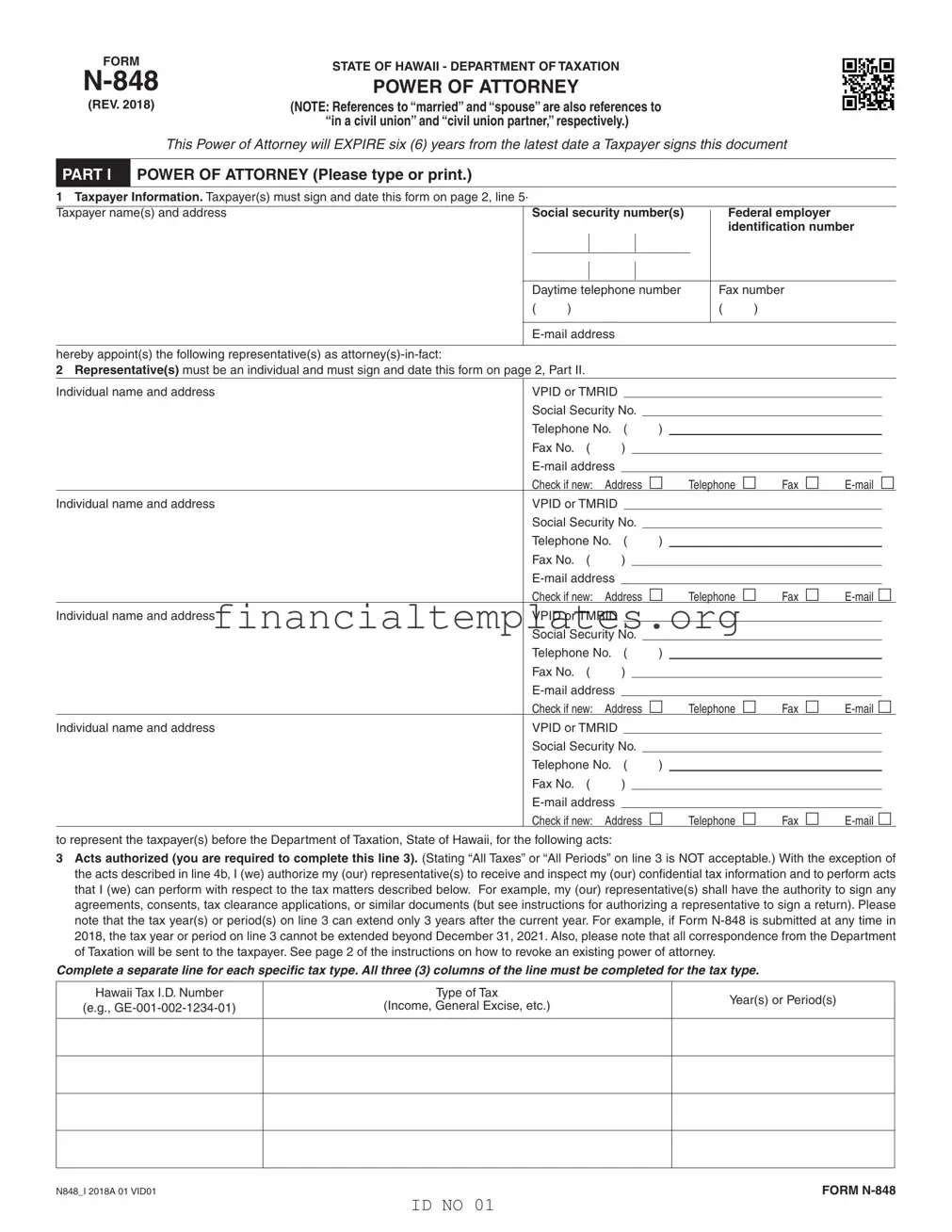The General Power of Attorney (POA) form closely mirrors the Tax POA Form n848 in its basic function: it grants an individual the authority to make decisions on another person's behalf. However, while the Tax POA focuses specifically on tax-related matters, a general POA encompasses a broader range of responsibilities. These might include making financial decisions, handling business transactions, and even addressing certain legal matters. The similarity lies in the core concept of delegated authority, even though the scope and application of that authority differ significantly between the two documents.
A Financial Power of Attorney shares similarities with the Tax POA Form n848, as it specifically grants an agent the ability to manage the financial affairs of the principal. This can include handling investments, managing bank accounts, and making financial decisions. The primary similarity between these documents is their focus on financial matters, although the Tax POA is more narrowly tailored towards tax-related transactions and compliance, demonstrating a focused subset of the broader financial powers covered in a Financial POA.
Healthcare Power of Attorney is another document that, although fundamentally different in its purpose—focusing on health-related decisions rather than financial matters—parallels the Tax POA Form n848 in structure. It designates an agent to make healthcare decisions on behalf of the principal in the event they become incapacitated. This document, like the Tax POA, is based on the principle of representation, entrusting decision-making power to someone else, but it applies specifically to medical, not fiscal, decisions.
The Durable Power of Attorney (DPOA) is characterized by its continuity; it remains effective even if the principal becomes incapacitated. This feature distinguishes it from the Tax POA Form n848, which does not necessarily contain such durability clauses. Both documents empower an agent to act on the principal's behalf, but the DPOA, with its endurance over time and through various conditions of the principal, offers a broader safeguard over the individual’s affairs, extending beyond just tax issues.
Springing Power of Attorney is designed to become effective upon the occurrence of a specific event, typically the principal's incapacity. Its alignment with the Tax POA Form n848 lies in the legal framework of delegating authority from a principal to an agent. However, the Springing POA's unique trigger mechanism—only "springing" into action upon predefined conditions—sets it apart, providing a nuanced approach to the transfer of decision-making power that is not usually found in the more immediately effective Tax POA.
Limited Power of Attorney allows the principal to grant specific powers to the agent for a limited time or task, sharing the concept of assigned authority with the Tax POA Form n848. The similarity lies in both documents' ability to narrow down the agent’s powers to particular tasks. While the Tax POA is inherently specific to tax matters, a Limited POA might be drafted for a variety of specific purposes, including but not limited to financial transactions, selling property, or attending specific legal proceedings.
The Advance Healthcare Directive, often referred to as a living will, provides instructions for one's care in the event of incapacitation. Though its purpose diverges significantly from that of the Tax POA Form n848, focusing on health care preferences rather than financial matters, both documents embody the principle of preparatory decision-making. They serve as proactive measures, allowing individuals to outline their directives (whether for health or tax matters) in anticipation of future events where they might not be able to express their wishes directly.
The Estate Planning Will, or simply a will, differs in nature from the Tax POA Form n848, primarily as it comes into effect after the individual’s death, rather than granting immediate authority during their lifetime. However, both play crucial roles in the management and disposition of personal affairs. While the Tax POA enables someone to manage tax-related matters potentially reducing the estate's tax liabilities, a will delineates how the individual’s assets should be distributed upon their death, thus indirectly influencing the estate’s financial obligations and benefits.


